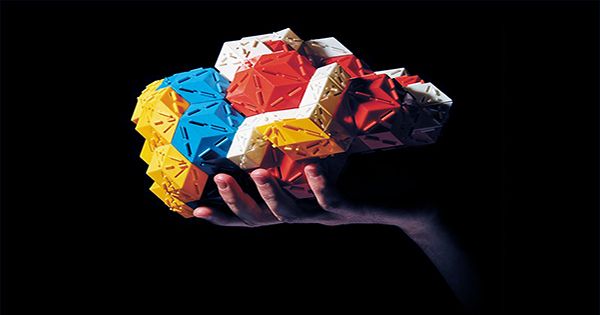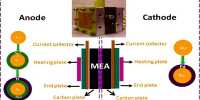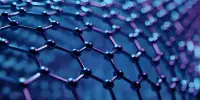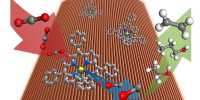Researchers at Brown University have discovered a quasicrystal that is self-assembled from a single type of nanoparticle. This is the first precise observation of quasicrystalline superlattice formed by a single element. Discovery has been reported in science. Quasicrystals are remarkable objects. Like crystals, they have ordered patterns but unlike crystals, these patterns do not repeat. They have a lot of technical applications, so inventing a new one is a big deal.
The single nanoparticle is shaped like a triangular pyramid, a tetrahedron, which can form different characteristic structures depending on the relative tendency of these nanoparticles to each other. The team saw them come together in a way that is not allowed in regular crystals, the researchers understand that they are creating something different, in the study.
Senior author Ou Chen, an assistant professor of chemistry at Brown, said in a statement, “Single-component quasicrystal nets were predicted mathematically and in computer simulations, but have not been shown before.” “It’s basically a new type of quasicrystal, and we’ve been able to figure out the rules for making it, which will be effective in the continuous study of quasicrystal structures.”
The team was not prepared to study quasicrystals. Their work focused on bridging the gap between nanoscale and macroscale by creating superstructures made of nanoparticles. The team showed a highly complex superstructure from a solid substrate. They then decided to use a liquid layer and discovered that the particles began to organize them into a queer crystal lattice.
Yasutaka Nagaoka, a postdoctoral scholar in Chen’s lab and the lead author of the new paper said, “When I realized that the pattern I was looking at was a quasicrystal, I emailed him and said, ‘I think I got something great.” “It was really exciting.”
The nanoparticles came together in a 10-sided shape (decagon) that has the ability to flex their edges as soon as the connection starts. The final structure is made of decagon with different side sizes (from nine to five) to fill the gaps. The team thinks that many quasicrystals can be made with the help of this flexible polygon tiling system.
Quasicrystals are used in the coating of frying pans as well as in anticorrosion treatments in surgical instruments. New discoveries can lead to important technological advances as well as new insights into chemistry, mathematics, art, and design.















